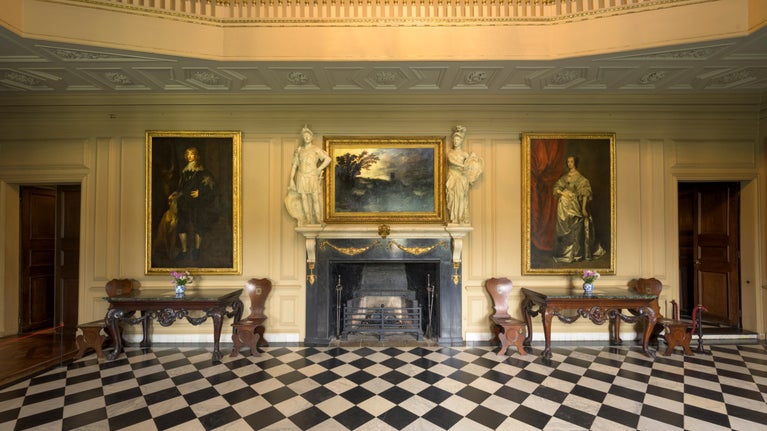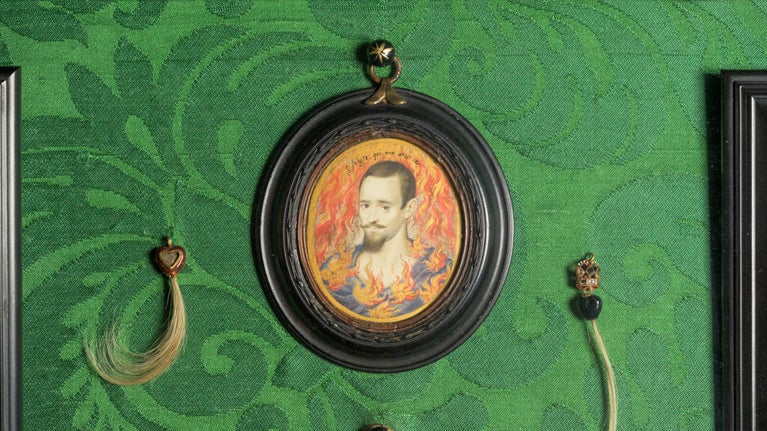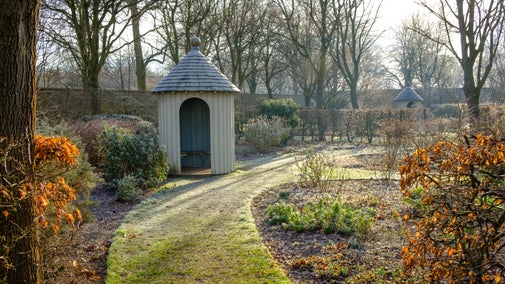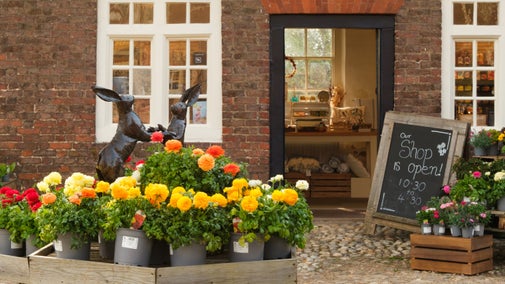
Ham House and Garden's collections
Explore the objects and works of art we care for at Ham House and Garden on the National Trust Collections website.

Nestled on the banks of the River Thames, Ham House, as it is seen today, is largely the creation of the tenacious Duchess of Lauderdale and her husband the Duke in the late 17th century. Together they transformed Ham, originally built in 1610, into one of the grandest Stuart houses in England. Immerse yourself in the 17th century as you discover the richly decorated rooms.
Please note, the house is currently closed for winter conservation work and reopens on 14 February 2026. The gardens, café, shop and second-hand bookshop are open as usual during this period. Thank you for your understanding and support.
Elizabeth Murray was a remarkable woman for her time, a tastemaker and prominent member of the royal court. Her home was designed to impress important guests. Look out for well-preserved wall hangings, paintings and furniture with rich colours and bright gilding.
Start your visit in the Great Hall, a grand and impressive reception space. Tread in historic footsteps as you cross the original 1610 black and white marble floor. The Chapel in the north-east wing formed part of Sir Thomas Vavasour’s original house and was originally the principal family living room. in the 1670s it was transformed into a chapel by the Duke and Duchess.
The Great Staircase has fine balustrade panels carved with trophies of arms and offers views down to the formal Cherry Garden garden.
In the Round Gallery on the first floor, there is a view down of the Great Hall. Here, the Duke and Duchess’s esteemed guests would meet and socialise before an evening of food and entertainment.
Next, you will find the richly decorated North Drawing Room, created in the 1630s by Elizabeth’s father William Murray, who used many of the same craftspeople that created Whitehall Palace.

Through the doorway is the Long Gallery, complete with portraits of family members and important friends, as well as stunning cabinets and tables from the 1670s.
The first floor also holds the Green Closet, the Queen’s Apartments (designed for Charles II’s queen, Catherine of Braganza) and the Library.
A photogrammetry project to capture the Green Closet has made the internationally-significant room and its collection more accessible to visitors.
The Green Closet is upstairs, opens based on volunteer availability and has low light levels. The digital model allows visitors to explore the room in fine detail, taking in its green silk wall hangings, carved woodwork, painted ceilings, cabinets, fireplace and gilded doors.
Ham House curator Dr Hannah Mawdsley worked closely with volunteer and photogrammetry expert David Fletcher on the project, capturing every inch of the Green Closet in intricate detail.
The Green Closet is the only surviving complete 17th century closet in the country, containing much of its original contents including stunning Japanese cabinets and intricate miniature paintings. This includes Nicholas Hilliard’s miniature of Elizabeth I, an example of one of the Queen's 'Mask of Youth' portraits.
Follow the link below to explore the 3D model of the Green Closet.

One of the most special treasures in the Green Closet is the miniature of the Man Consumed by Flames, which is featured in the book, 125 Treasures from the Collections of the National Trust.
Painted around 1610 by Huguenot refugee Isaac Oliver, it has been displayed in this remarkable cabinet room since the 1670s.
Isaac Oliver enjoyed the patronage of Anne of Denmark, Queen of James I, having previously been a pupil of the famed miniaturist Nicholas Hilliard. The symbolism of the flames and the motto above the sitter’s head (Alget qui non ardet – ‘he grows cold who does not burn’) symbolises burning passion, perhaps in religious or romantic love.
Descend the Great Staircase to further explore the ground floor and the private spaces of the Duke and Duchess. Pass through a hidden door to the Duchess’s Closet and then through into the White Closet and Volury.
In the Marble Dining Room, carved oak panelling, a parquet floor and gilt leather on the walls would have provided a fitting stage for elegant dinners and entertainment in the heart of the house. Close by you will find the Duke’s Dressing Room, the Duchess’s Bedchamber and Duke’s Closet.
Downstairs you can explore the Beer Cellar, the Duchess’s Bathroom, and the Historic Kitchen.
As you leave the house, stop by the Still House to take in the sight and smells of drying flowers and herbs cut from the gardens.
Above or below stairs, you’ll find treasures around every corner of Ham House. Explore the house’s hidden charms for yourself with interpretation panels and our welcoming volunteer room guides on hand to answer questions and share their knowledge.

Explore the objects and works of art we care for at Ham House and Garden on the National Trust Collections website.
Explore the rich history of Ham House on the banks of the River Thames near Richmond – a rare example of 17th-century life, treasures and architecture; hardly changed in 300 years.

From the productive Kitchen Garden to the leafy Wilderness, there's plenty to enjoy on a stroll around Ham House's gardens in late autumn and winter. Discover more seasonal highlights to explore on your next visit.

Set in historic buildings, the Orangery Café and shop offer inviting spaces to relax and treat yourself on your visit to Ham House and Garden. Indulge in a warming treat and browse our new autumn/winter collection to get cosy and embrace the season.

Among the rare collection of cabinets at Ham House in Richmond, discover fashionable 17th-century statement pieces, strong boxes and secret hiding places.
